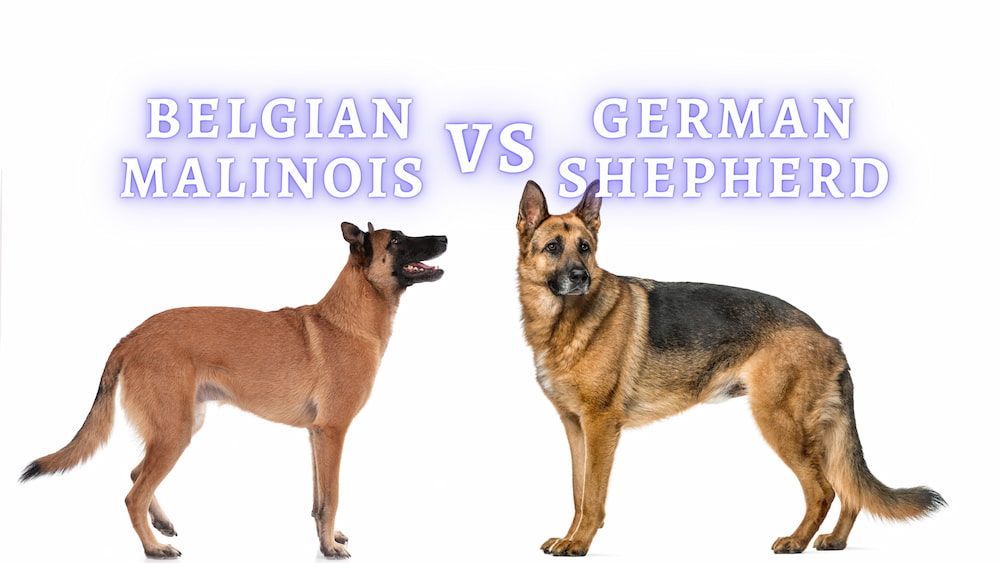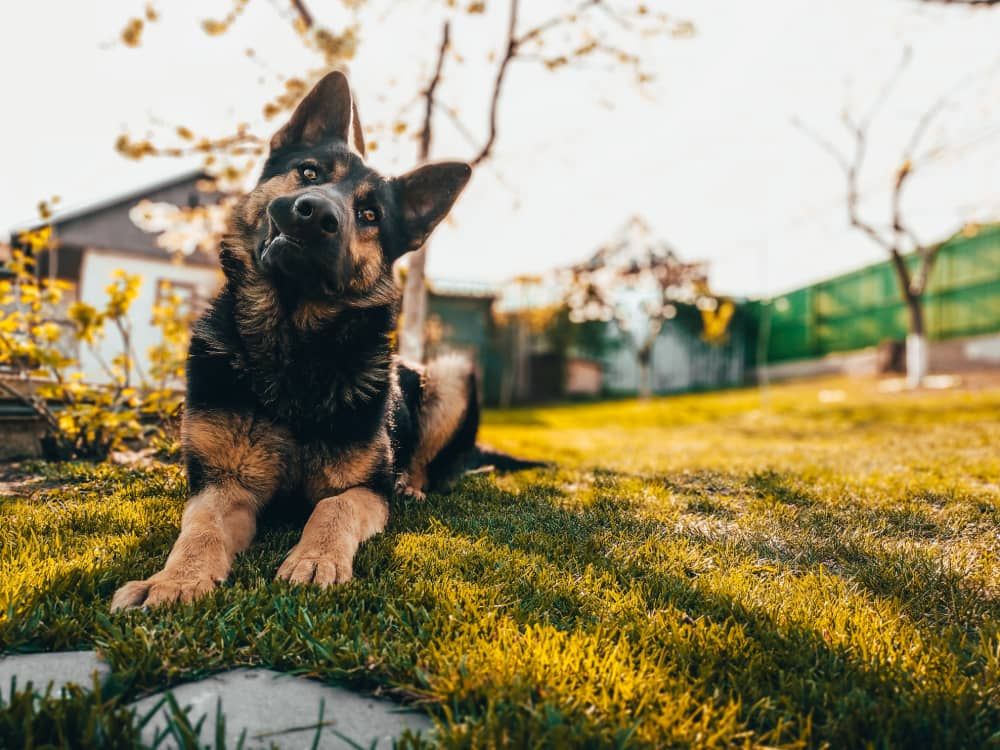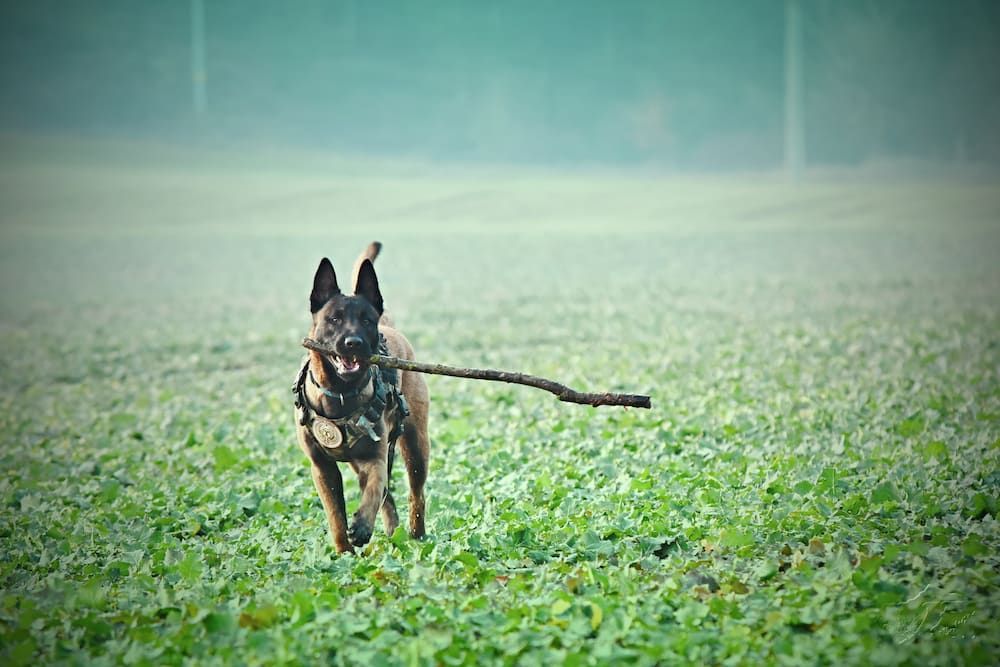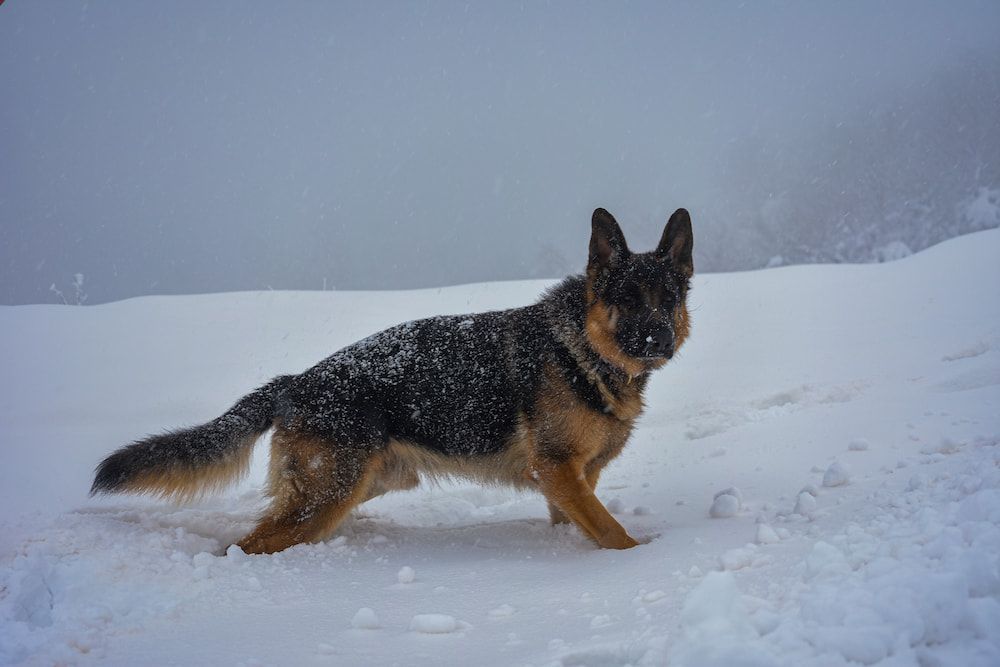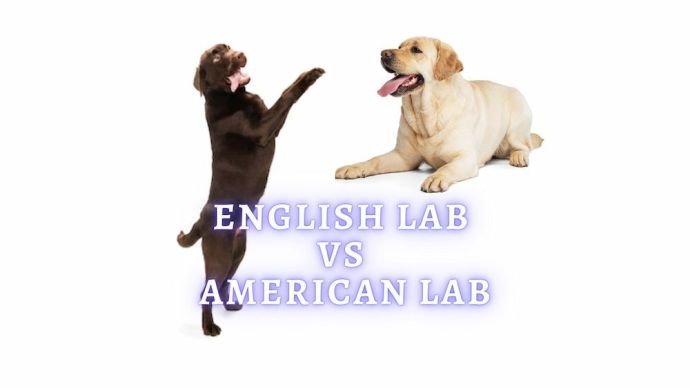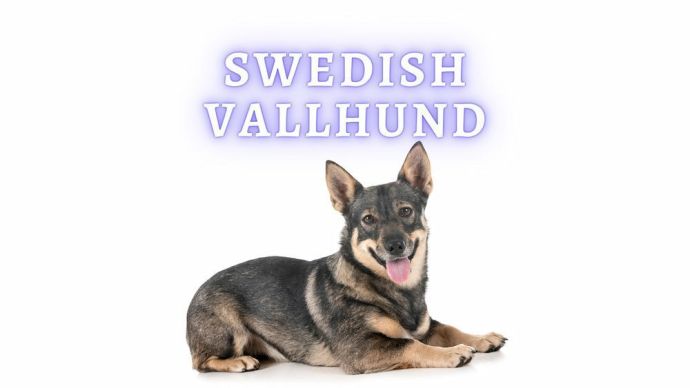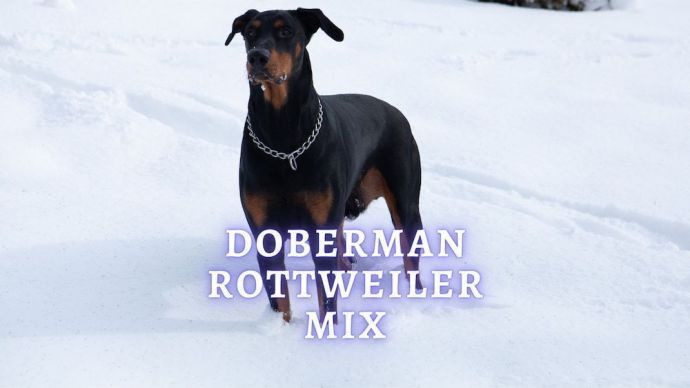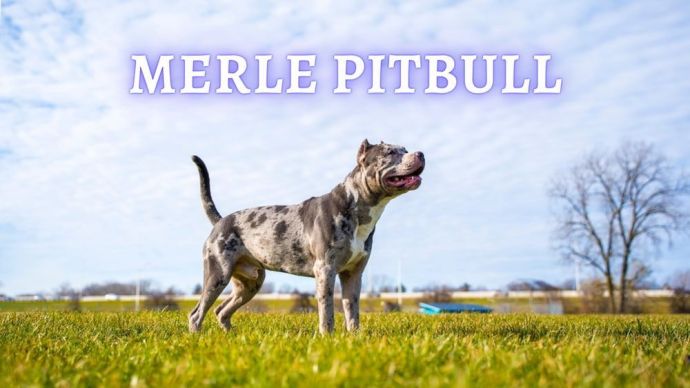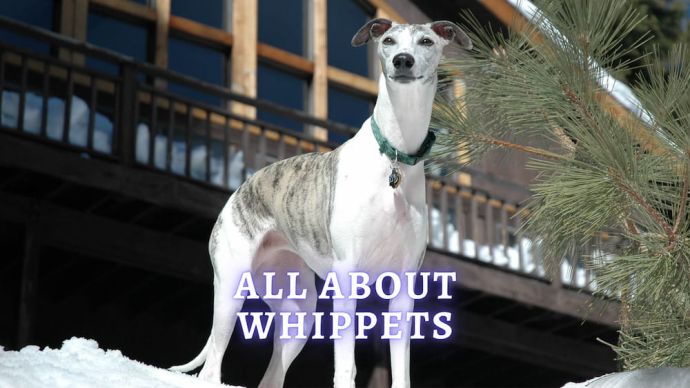Belgian Malinois vs. German Shepherd: What are their Similarities and Differences?
Written by:
Author: Elle Veranth
A copywriter for articles and blogs about pet care, food, beverage, and business. Has always had a passion for writing and editing, but began taking freelancing seriously fairly recently.
View all 29 articlesLearn about our editorial process and veterinary review board.
Viewed: 8688
Updated on: 05/02/2023
Before bringing a dog into your life, it is vital to do extensive research on the breed that you are seeking. There are many lifestyle factors to consider, such as your physical activity level, how often you are home during the day, and any young children or other animals currently living in the home.
If you are somebody with dog ownership experience and can commit to giving a dog proper training and sufficient exercise, a dog from the Shepherd Family might be a good fit for you.
Two breeds within this family are the Belgian Malinois and German Shepherd. Each of them is known for their sharp intelligence and fierce loyalty. However, like with any breed, they have their fair share of differences. Read on to find out more about the Belgian Malinois vs. German Shepherd.
Main Characteristics
| Belgian Malinois | German Shepherd | |
| Height | 22-24 inches | 22-26 inches |
| Weight | 40-80 pounds | 50-90 pounds |
| Type of Coat | Short to medium-length, double coat | Medium-length, thick double coat |
| Colors | Brown or fawn with sable markings and a black mask and ears. | Brown or tan with black markings, sable, all black, all white. |
| Lifespan | 10-14 years | 8-10 years |
| Personality | Intelligent, athletic, loyal, aloof. | Intelligent, loyal, friendly, curious. |
| Intelligence | Highly intelligent and easy to train. | Highly intelligent and easy to train. |
| Social with other dogs | Early socialization is a must, rather independent when it comes to other dogs. | Should be socialized from a young age, enjoys playing with other dogs. |
| Social with people | Can be cautious of strangers, very protective of their family | Friendly to people that they know can be cautious of strangers. |
| Damage | Does not like to be left alone for long periods. | Can develop separation anxiety and become destructive. |
| Energy | Very high energy and will become destructive if they don’t get enough activity. | High energy, enjoys daily walks, hiking, and fetching. |
What are the differences between a Belgian Malinois and a German Shepherd?
It is common for people to confuse these two breeds, but they do have some distinct differences. Here are a few of them.
Size
The Belgian Malinois and German Shepherd are fairly similar in height, although some German Shepherds may be a bit taller. German Shepherds generally have more muscle mass, making them heavier, while a Belgian Malinois is leaner.
On average, a male Malinois weighs up to 80 pounds while a female weighs up to 60. On the other hand, a male German Shepherd can weigh up to 90 pounds and a female can weigh up to 70 pounds. [1]
Coloring and markings
Most Belgian Malinois have solid coloring (mainly fawn, tan, or chocolate) on their bodies with black markings on their face, ears, and paws. German Shepherds have many more colored markings. Many of them are tan with black markings all over. Some also have coats that are all black or all white.
Other differences in physical appearance
There are other distinguishing physical features between these two breeds besides their size and coloring. The Belgian Malinois has a more slender face and their ears tend to stick straight up. A German Shepherd’s ears are more angled to the side. [2]
A German Shepherd also has thicker fur, and it is usually longer than the fur of a Belgian Malinois. German Shepherds also have bushier tails while a Malinois’s tail is more angled.
Temperament
Perhaps the biggest difference between these breeds is their temperament. The German Shepherd temperament is alert yet docile. They make excellent family pets and are gentle with young children, as long as they are accustomed to them.
German Shepherds are used as police dogs, but it is much more common to see a Belgian Malinois be used. They are not commonly bred to be companions. They have a strong work ethic and know how to use it.
The Belgian Malinois is highly intelligent and can be trained to detect bombs and narcotics, which makes them excellent assets to the police force and military. They can also be trained as guard dogs that attack and release on command as well as search and rescue dogs.
READ MORE: Police Dog Names
What are the similarities?
The Belgian Malinois and German Shepherd breed share quite a few similarities as well. Here are some examples.
Grooming needs
While a German Shepherd’s fur is thicker and longer, both breeds have similar grooming needs. They both benefit from brushing several times per week to keep their coat healthy and shiny. Each of these breeds also has a double coat, and their undercoat sheds twice per year. They will need extra brushings around this time to catch any stray fur that would end up on your floor otherwise.
The Belgian Malinois and German Shepherd do not need to be bathed that often. Bathing them too much can cause skin irritation. In general, they should be bathed about once per month unless they get visibly dirty.
Intelligence
These dogs are working breeds and are incredibly intelligent. They thrive with a confident owner and handler and respond to positive reinforcement training. Both the Belgian Malinois and German Shepherd love to please their owners and form loyal bonds with them.
Loyalty and bravery
Speaking of loyalty, these breeds are very “ride or die” with their owners and families. They naturally have protective instincts and will be sure to sound the alarm if they sense an intruder approaching. They have no fear when it comes to guarding their territory.
Exercise needs
Neither a Belgian Malinois nor a German Shepherd is the right fit for somebody who lives a sedentary lifestyle. Both of these breeds need daily vigorous exercise. They each have high levels of energy and love to run, hike, and fetch. They make great workout partners!
These dogs will quickly become destructive if their exercise needs are not met or if they are left alone for too long.
Breeds History
Each of these breeds is a member of the Herding Group and was originally bred as herding dogs for livestock. As one can see from their names, the Belgian Malinois was first developed in Belgium and the German Shepherd in Germany.
The Belgian Malinois is one of the four varieties of Belgian Shepherd dogs and was first recognized by Professor Adolphe Reul in the late 1800s. Each variety of the dogs was named after the area surrounding Brussels, Belgium, where it was developed. The Belgian Malinois originates from the Malines region.
Once the farming lifestyle became less widespread, the Belgian Shepherd Dog varieties shifted toward police dog training. According to the American Kennel Club (AKC), it is estimated that Belgian Shepherds were imported to the United States as early as 1908 to work as police dogs in New York City. In 1959, the Belgian Malinois officially became recognized as its own breed by the AKC.
The German Shepherd was also founded in the late 1800s. The founder of the breed is Captain Max von Stephanitz. He desired to create an independent and obedient breed that was medium to large and he accomplished just that.
German Shepherds were originally bred as herding dogs for sheep but, like the Belgian Malinois, they became popular police and military dogs once farming began declining. They were widely used by the German army in World War I and II.
These dogs became well-known for their intelligence and loyalty. Today, they are one of the most popular dog breeds in the United States.
READ MORE: 30 Most Rare Dog Breeds
Size and Coloring
The size and coloring of both the Belgian Malinois and German Shepherd are a few of the differences that they share. Like most dog breeds, males are usually taller and heavier than females.
They are similar in height, but German Shepherds are typically more burly and muscular. Belgian Malinois are still very muscular but have a more lean build. A Belgian Malinois is between 22 and 24 inches tall at the shoulder, while a German Shepherd is between 22 and 26 inches tall.
In regards to weight, German Shepherds are heavier than Belgian Malinois due to their muscular build. They generally weigh between 50 and 90 pounds, while the Belgian Malinois weighs between 40 and 80. Some may grow even larger.
When it comes to coloring, it is more common to see a wider variety of colors in the German Shepherd. Belgian Malinois tend to have a solid coloring on their bodies, usually in tan, fawn, or brown. They have black markings on their face and ears. German Shepherds are mostly tan with black markings.
Temperament and Personality
The Belgian Malinois and German Shepherd share some similarities in their temperament, personality, and behavior, but have differences as well.
Between these two breeds, the German Shepherd is more suitable as a family dog than a Belgian Malinois. They are more gentle and friendly while a Malinois tends to be more aloof. It is possible to have a Malinois as a family dog, but they should be very well socialized and used to children. Raising them beginning as a puppy is ideal.
Both dogs have similar intelligence levels and they are incredibly loyal to their pack. They are very easy to train and love to be rewarded and praised. The Malinois should be handled by a very experienced owner, but a German Shepherd is no breed for beginners either.
These dogs thrive with order and structure. It is important to handle them with confidence so they know that you are the boss.
Activity Levels
The Belgian Malinois and German Shepherd do not like to be trapped indoors all day. These breeds need daily exercise and not just a quick walk around the block. Being active for an hour per day is ideal.
They must burn off their pent-up energy to avoid bad behavior. They enjoy running, biking, and showing off their agility skills. Some of them enjoy swimming, too.
German Shepherds are more adaptable than Belgian Malinois. As long as they get their daily exercise, it may be possible to have a German Shepherd in an apartment. A Belgian Malinois will not be happy about apartment living, though. These dogs would love a large backyard with a high fence.
READ MORE: Best Toys for German Shepherds
Conclusion
Both the Belgian Malinois and German Shepherd are incredible dog breeds that are loved by many. They share some similarities, but they are also very different. These breeds are not ideal for everybody, but they will thrive in a home where they can get out and exercise and are taught structure. If you are an experienced dog owner, one of these breeds may be perfect for you.
FAQs
Is a Belgian Malinois better than a German Shepherd?
Everybody has a different opinion on which dog breeds they consider “better” than others. There isn’t necessarily a right or wrong answer. Both of these breeds are incredibly intelligent, loyal, and obedient. They each require similar levels of physical activity. In terms of which of the two is a better family dog, a German Shepherd is more ideal.
Are Belgian Malinois as smart as German Shepherds?
Both of these breeds are very smart. They have to be smart to be trained to do the tasks they are capable of. They love to learn new things and please their owners. Positive reinforcement is key when training these dogs. You can reward them with treats, pets, and praise.
Why do police use Belgian Malinois instead of German Shepherds?
Some police officers use German Shepherds to track down a suspect or sniff out bombs or drugs, but the Belgian Malinois is usually preferred. This breed is not widely bred to have as a family pet. They like to work and use their skills. Their high prey drive and intelligence help them succeed in assisting the police force with keeping communities safe.
Can a German Shepherd beat a Belgian Malinois?
This is a tricky question. Both of these breeds have different builds of muscle mass and prey drive. German Shepherds are usually heavier, but Belgian Malinois can have more aggressive tendencies. Regardless, it is crucial to socialize these dogs from a very young age so they learn to (at the very least) tolerate other dogs and people. A German Shepherd may typically be friendlier than a Belgian Malinois, but no dog should attack unless provoked or they are trained to do so on command.
Article Sources:
- Gibeault, Stephanie. “Meet Two Similar Yet Different Breeds: German Shepherd Dog & Belgian Malinois.” American Kennel Club, akc.org/expert-advice/dog-breeds/german-shepherd-dog-vs-belgian-malinois/.
- “Official Standard of the German Shepherd Dog.” American Kennel Club, images.akc.org/pdf/breeds/standards/GermanShepherdDog.pdf.
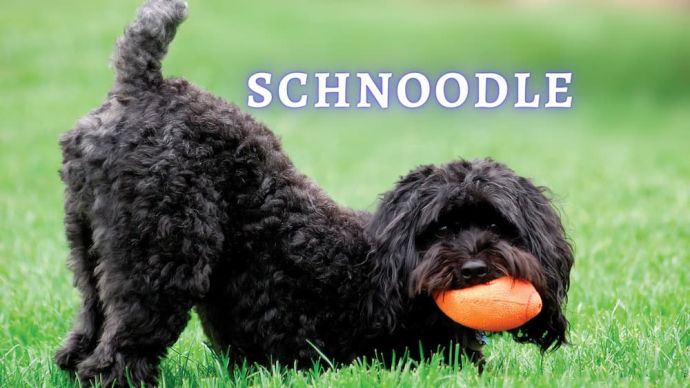 Dog Breeds Schnoodle: Personality, Temperament, and Everything Else You Should Know
Dog Breeds Schnoodle: Personality, Temperament, and Everything Else You Should Know - 1202
- 3
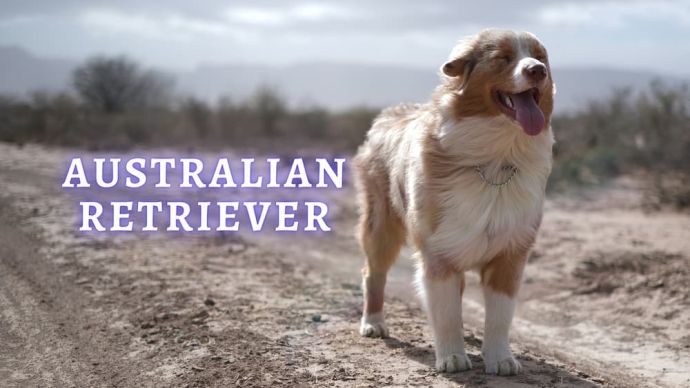 Dog Breeds Australian Retriever: All About Australian Shepherd Golden Retriever Mix
Dog Breeds Australian Retriever: All About Australian Shepherd Golden Retriever Mix - 674
- 0
 Dog Veterinary Tips Why is my Dog throwing up: Causes and Preventing (Veterinary Advice)
Dog Veterinary Tips Why is my Dog throwing up: Causes and Preventing (Veterinary Advice) - 23424
- 5
 Dog Care Why Is My Dog Bleeding From Its Butt? Causes and treatment of rectal bleeding in the dog
Dog Care Why Is My Dog Bleeding From Its Butt? Causes and treatment of rectal bleeding in the dog - 22076
- 0
 Dog Care My Dog Keeps Scratching His Mouth: Reasons Why Your Dog Scratching Face
Dog Care My Dog Keeps Scratching His Mouth: Reasons Why Your Dog Scratching Face - 17561
- 1









